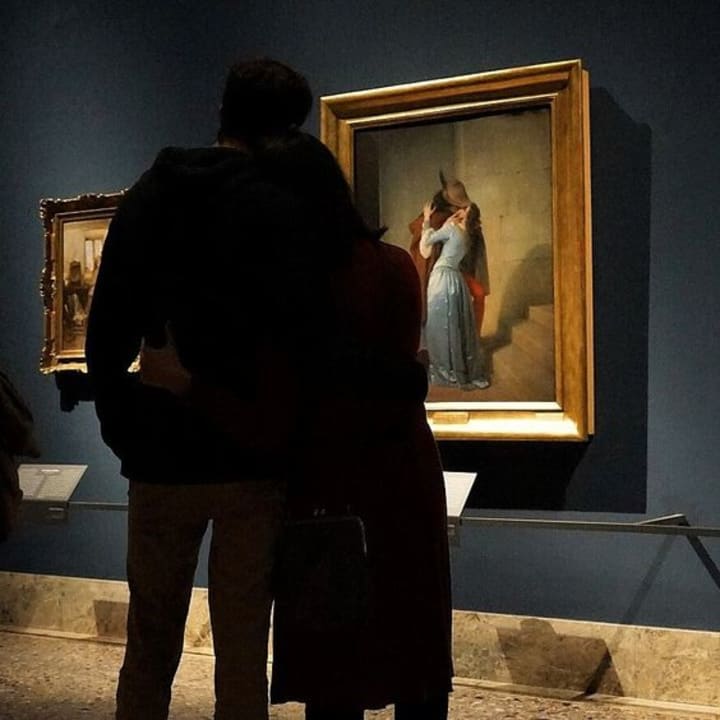What Makes Up the Core Idea of Romanticism?
Artistic and Philosophical

Europe served as the focal point of the romanticism artistic and philosophical movement from the late eighteenth to the middle of the nineteenth centuries. The movement placed a strong emphasis on sentiments, individualism, imagination, and the beauty of nature.
A response to the Enlightenment's emphasis on reason, science, and eternal truth may be seen in the central premise of Romanticism. Instead, the romantic movement gave great weight to intuition, feeling, and firsthand knowledge.
The social and political changes that led to the Romantic movement included the French Revolution, the Industrial Revolution, and the rise of capitalism. Romantic philosophers eschewed the strict social norms of the Enlightenment in favour of individualism, freedom, and democracy. They felt that the human spirit was capable of tremendous invention and imagination, and they wanted to explore the depths of the human experience via art, literature, and music.
One of the primary tenets of Romanticism was the importance of feeling and emotion. In an effort to evoke powerful emotions in their audience, romantic writers and painters used striking imagery and emotive language. They believed that art should move the observer or reader on a deep level in addition to being attractive. Romanticism consequently opposed the emphasis on reason and rationality, which they perceived as being sterile and frigid.

One of the main themes of Romanticism was the pleasure of nature. Because they saw nature as a source of inspiration and renewal, romantics sought to capture its beauty in their artwork. They believed that nature was a manifestation of the divine and that it contained deep spiritual truths that could be attained via one's own personal experience. Several romantic writers lauded the beauty of nature in their works, and they frequently incorporated natural imagery to support their arguments.
Another theme of the Romantic movement was the value of the individual. Romantics believed that it was important to respect and share each person's unique viewpoint on the world. They opposed the idea that people should conform to societal norms and expectations and supported people's freedom to follow their own interests and objectives instead.
This emphasis on individualism was a response to the Romantics' opposition to the inflexible social structures of the Enlightenment, which they perceived as repressive and restrictive.
Along with individualism, the romantic movement emphasised the power of the imagination. Romantics believed that human minds are incredibly creative and that the power of imagination can unlock the mysteries of the universe. They appreciated the dreamy nature of the creative capacity, seeing it as a doorway to deeper planes of reality. This emphasis on the imagination is seen in numerous romantic works of art and literature, which usually feature fantastical or surreal elements.
What are the top ten romanticism principles?
In the late 18th and early 19th centuries, romanticism emerged as a philosophical and artistic movement in Europe. The movement was characterised by a stress on emotion, independence, imagination, and the beauty of nature. The top ten Romantic tenets are as follows:

1. Emotion: Romanticism emphasised the importance of emotion and passion over logic and reason. Romantic authors and painters evoked powerful emotions in their readers and viewers by using passionate language and striking imagery.
2. Individualism: Romantics admired each person's distinction and rejected the idea that people should conform to social standards and expectations. They believed it was crucial to acknowledge and share the unique perspectives that each person had on the world.
3. Nature: Romantic artists adored the beauty of nature and used it as a catalyst for inspiration and renewal. They believed that nature was a manifestation of the divine and that it contained deep spiritual truths that could be attained via one's own personal experience.
4. Imagination: According to Romantics, the human mind is incredibly creative and that the power of imagination may unlock the secrets of the universe. They appreciated the dreamy nature of the creative capacity, seeing it as a doorway to deeper planes of reality.
5. Mysticism: Many Romantic painters were fascinated by mysticism and the supernatural. They did so in an effort to learn more about obscure and perplexing ideas.
6. Gothic: Romantics were drawn to the Gothic style because of its emphasis on gloom, mystery, and the occult. Gothic structures, writings, and art all had a big impact on romantic literature and art.
7. Exoticism: The myths, folktales, and legends of other nations fascinated romantic painters. They regularly used myths from other civilizations as the inspiration for their own works.
8. Revolution: Many Romantic painters were inspired by the political and social upheavals of the era, particularly the French Revolution. They saw these occurrences as proof of the person's inner fortitude and their capacity for change.
9. Nostalgia: Romantics were fascinated by the past and wanted to express this fascination via their art. They were captivated by studying myths, folklore, and folktales of different civilizations and frequently took inspiration from them.
10. Love: Artists were interested in examining the intricacy of love and relationships. Because they respected the power of love to elevate and transform the human soul, they commonly used love as the main theme in their artwork.
Romanticism's core principles had a significant impact on many areas of art, literature, and culture, and they still have an influence on thinkers and artists today.

The last characteristic of Romanticism was a fascination with the past. Romantics drew their ideas from history and attempted to capture the atmosphere of bygone eras in their writing. They were captivated by studying myths, folklore, and folktales of different civilizations and frequently took inspiration from them. This interest in the past is evident in the Romantics' love of Gothic architecture, mediaeval literature, and historical myths and tales.
In conclusion, it may be said that the central principle of Romanticism was a reaction to the Enlightenment's emphasis on reason, science, and immutable truth. Romanticism emphasised the principles of feeling, individualism, imagination, nature, and the past. Romantics believed that art should arouse powerful feelings and that the human spirit is capable of incredible imagination and creativity. In contrast to the rigid social stratification of the Enlightenment, they admired the beauty of nature.
The Romantic movement had a profound effect on music, literature, and art, and it continues to have an impact on modern ideas and innovators.
About the Creator
Ahamed Thousif
🌟 Welcome to the realm of exploration, where communities come alive through the power of words! 📚✨ Join me as we embark on a journey to discover the vibrant tapestry of stories and Poems.
VISIT - "MY FOOD BLOG"






Comments
There are no comments for this story
Be the first to respond and start the conversation.